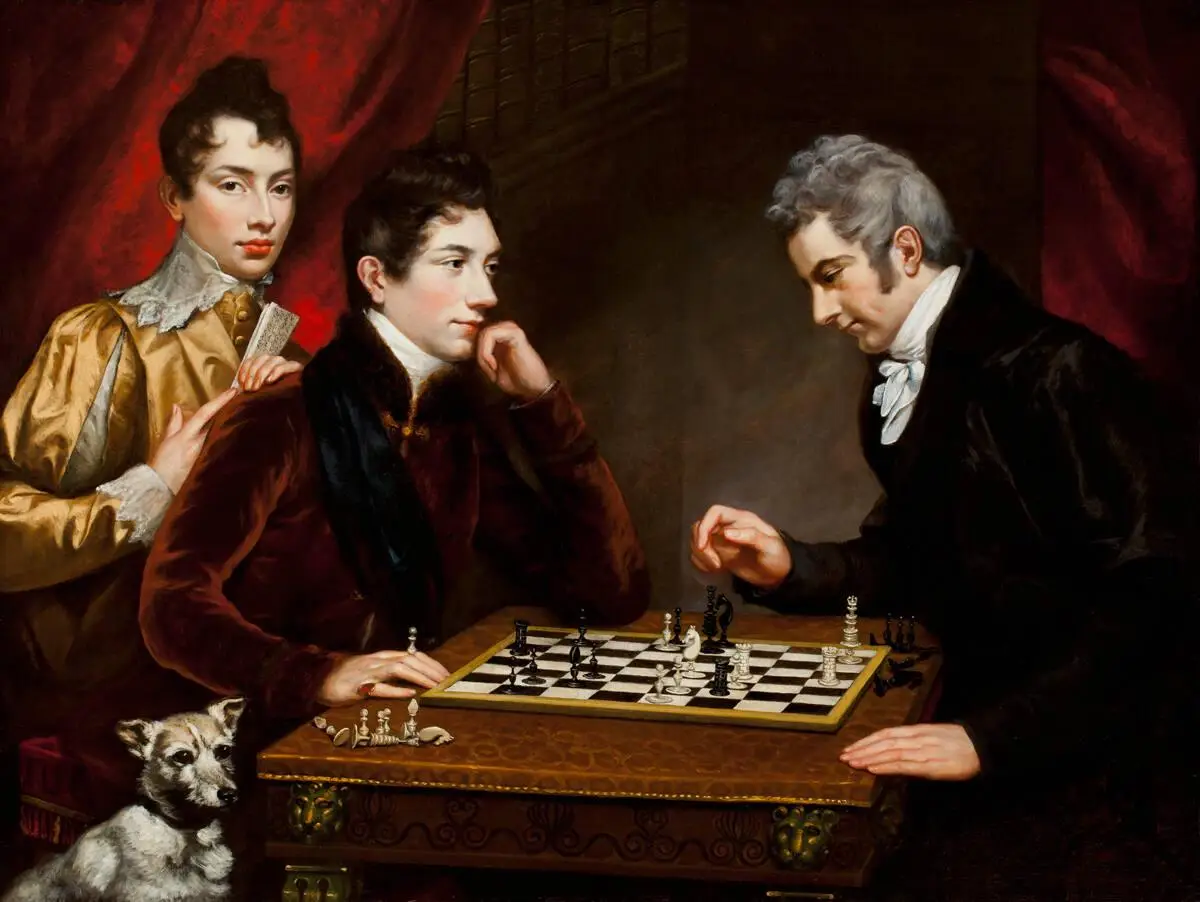We say we want the truth, but what we really crave is a perfect lie. One that reveals a deeper truth we already sensed but couldn’t express. One of the most powerful moments in our games occurs when players realize their distrust was justified all along. When their paranoia pays off. The trusted advisor suddenly draws a hidden dagger. The loyal henchman is revealed to be the villain’s spy all along. The forgettable merchant emerges as the mastermind. The table erupts in chaos, and if you’ve done your job well, someone will always declare, “I knew something was off.”
The Paradox of Trust in Betrayal
They did not know it, not truly. But they suspected something. A faint suspicion can make all the difference between a twist that gives a campaign energy and one that takes it away.
The best betrayals in our games don’t break trust: they fulfill it. They validate your players’ suspicions while still surprising them with the specifics.
We live in an age of narrative betrayal fatigue. Each streaming show adds its villain reveal, and each movie franchise asks for a shocking revelation. Game of Thrones built its name because anyone could die or become a villain at any moment. We grew tired of betrayal, and our thoughts became so twisted that a character acting as they always do feels like the real plot twist.
But tabletop roleplaying is active creation. A good betrayal exists in quantum uncertainty, both surprising and somehow expected. Players half-know what’s coming. That’s our beautiful contradiction: the best betrayals don’t break the fundamental trust at the table but validate the whispers of suspicion you’ve been deliberately planting in your players’ minds all along.
The difference between a cheap twist and a reliable betrayal is the difference between your players leaving the table saying “that was bullshit” and them leaving saying “I can’t believe we didn’t see it sooner”. One diminishes; the other electrifies. One betrays the players; the other betrays the characters while rewarding the players. One breaks trust; the other deepens it.
Let’s explore how to craft the latter.

Foundations of Trust and the Anatomy of Betrayal
Before you can artfully shatter trust, you must first build it with careful hands. Trust in roleplaying games operates on multiple overlapping layers, each requiring different techniques to establish and, eventually, to strategically undermine.
First comes mechanical trust. Players need to believe you’ll use the rules fairly. Not that you can’t bend rules, but your bends must be consistent. House rules? Great. House rules that conveniently shift when they block your plans? Terrible. If you’re planning some grand rules subversion, you must first be the referee they trust completely. Players need to feel solid ground beneath their feet before you can make it disappear. They need to trust the game before they can truly appreciate its betrayal.
Narrative trust grows when you respect the unspoken contract of your game’s reality. Drop spaceships into your dragon-filled kingdom without warning, and players feel cheated, not surprised. When heroes solve the riddle that should open the ancient door but you keep it locked anyway? Instead of creating challenge, you’re breaking the promise that actions have consistent consequences. Players need to believe their choices matter in a world that makes sense, even when you plan to pull the rug out later.
Personal trust. Perhaps the most crucial layer, develops from your demonstrated respect for player autonomy and the emotional investment they’ve made in their characters. Handle this trust like fine crystal as it breaks easily and can’t be glued back together. Shatter it, and players don’t gasp in excitement; they just leave, mentally and eventually physically.
Campaign length changes everything about trust-building. With a long-running group, you can lay trust like sedimentary rock, layer by patient layer, knowing you’ll dig it all up months later. But at a convention? You’re working in fast-forward. You need trust concentrated like espresso. Establish a rule in hour one (monsters always attack the nearest target, brass fixtures always signal traps) just so you can gloriously shatter it by hour two. Same chemistry, different clock speed.
Regardless of timeframe, the technique remains the same: establish patterns that players can recognize, rely upon them consistently enough to breed complacency, and only then consider their strategic violation.
Trust is the currency of great storytelling. We don’t build it to preserve it, we build it so we can spend it at the perfect moment. The difference between manipulation and magic is whether your players feel cheated or rewarded when the twist arrives.
And this is where the anatomy of betrayal becomes crucial. A reliable betrayal never violates that fundamental principle. It might betray the characters, but it never betrays the players.
Consider these contrasting scenarios:
The Cheap Twist: The players have spent ten sessions working with an NPC to recover an ancient artifact. When they finally succeed, the NPC steals it and reveals themselves as the villain, despite having had multiple opportunities to steal it earlier, having demonstrated no previous hints of villainy, and having no established motivation for the theft beyond “surprise!”
The Reliable Betrayal: The same basic scenario, but the NPC has occasionally asked strange questions about the artifact, has been spotted having hushed conversations that stop when players approach, and has a backstory that, while not obviously villainous, contains elements (a lost loved one, a mysterious patron, an unusual interest in the artifact’s specific powers) that retroactively align perfectly with their betrayal.
The difference is in the reception. The cheap twist feels arbitrary while the reliable betrayal feels inevitable in hindsight. One breaks the social contract; the other fulfills it in unexpected ways.
The Suspicion Economy
The paranoid player isn’t your enemy but your most valuable collaborator. When someone leans in, eyes narrowed, and mutters “I don’t trust this NPC,” they’re investing in them with unexpected fervor.
Player suspicion is pure narrative engagement. Full stop.
When a player grows suspicious, they scrutinize details, construct elaborate theories connecting scattered elements of your world, and actively anticipate potential plot developments. They become co-authors, filling gaps with their imagination and forging connections you might never have considered. Players who care enough about your fictional world to theorize about its hidden machinery is the GM’s holy grail.
Smart GMs nurture suspicion. This means recognizing that even factually incorrect suspicions often point to thematic truths worth honoring. But this certainly doesn’t mean validating every wild conspiracy theory.
Players rarely suspect something without reason. Their suspicions emerge from patterns they’ve subconsciously detected in your storytelling. Confirmation bias is the brain hunting for connections and finding them, even where you didn’t intentionally create them. The real question isn’t “Are they right about who the traitor is?” but “What narrative instinct drives this suspicion, and how can I satisfy it unexpectedly?” When a betrayal clicks into place, players experience what psychologists call the “makes sense stopping rule”, that moment when everything suddenly connects and feels inevitable. You’ve surprised them while validating what they sensed all along.
Player suspicion is pure narrative capital. When someone at your table distrusts an NPC, they’ve just handed you a valuable gift in gaming: their genuine attention and investment.
If players become convinced the kindly sage is secretly working for the villain, although you never planned this, they’ve likely saw something in your portrayal that triggered their intuition. The sage might know things they shouldn’t, or they keep showing up right when it’s most helpful for the plot. Don’t just shut down their theory, but dig into why they’re suspicious in the first place. Are your players craving more complex characters? Do they sense that in your world, wisdom and power don’t come without strings attached?
You might then reveal the sage isn’t the villain’s agent as suspected, but rather the villain’s estranged parent, feeding players information in hopes of redeeming their child. This satisfies players’ deeper intuition (the sage has hidden motives) while still surprising them with the specifics.
Here are practical techniques for cultivating productive suspicion:
1. The Incongruity Principle Plant details that don’t quite align with the NPC’s stated motivations or background. The noble who claims to despise magic but whose library contains numerous arcane texts. The loyal knight whose family name matches that of an ancient enemy mentioned in the kingdom’s histories. These aren’t explicit clues; they’re atmospheric inconsistencies that create cognitive dissonance.
2. The Interruptus Technique Begin to reveal something suspicious, then deliberately interrupt it. The advisor starts to say something about the artifact’s true nature, then notices the players and changes the subject. The ally receives a letter that visibly distresses them, but when questioned claims it’s “family matters” and burns it. These moments signal importance precisely through their conspicuous incompleteness.
3. The Rule of Threes Before any significant betrayal, ensure there are at least three moments of foreshadowing, ideally of escalating specificity. The first might be so subtle most players miss it entirely. The second should raise eyebrows at the table. The third should occur just before the betrayal itself, making the revelation feel simultaneously surprising and inevitable.
4. The Echo Chamber Have uninvolved NPCs occasionally express mild concern or curiosity about the soon-to-betray character. “That advisor of yours—has he always been so interested in ancient artifacts?” “Funny, I could have sworn I saw your companion at the docks talking to those merchants from the enemy kingdom.” These external perspectives validate the players’ emerging suspicions without confirming them outright.
5. The Sudden Expertise Have the betrayer occasionally demonstrate knowledge or skills incongruous with their established character. The supposedly simple merchant who displays surprising insight into court politics. The hired muscle who drops a casual reference to obscure arcane lore. These moments should be brief enough to be dismissed individually but form a pattern when considered collectively.
6. The Cognitive Blind Spot Deliberately position betrayers in roles that exploit players’ inherent cognitive biases. We naturally trust authority figures, helpers, the vulnerable. When the king’s young page who’s been assisting the party turns out to be the mastermind, it works because players automatically assigned him low status in their mental hierarchy. You didn’t trick them; they tricked themselves, and part of them knew it all along.
The art lies in making these techniques subtle enough that attentive players feel rewarded for their perception, while inattentive players still experience the satisfaction of retroactive recognition. You don’t need to fool all of the players all of the time, but you’re trying to create a scenario where different levels of player engagement are all rewarded, albeit differently.
The true masters of this craft recognize that what matters isn’t whether players consciously identify the betrayal beforehand, but whether they subconsciously register enough discordant notes that the revelation feels like the perfect final chord rather than a random key-change.
Betrayal Archetypes Worth Your Time
Not all betrayals are created equal. Some narrative forms have proven their worth across gaming tables, while others reliably produce only eye-rolls. Here are the archetypes worth investing in:
The Fallen Mentor works because it breaks hearts and beliefs simultaneously. When the wizard who taught your mage becomes the necromancer you hunt, players question everything they knew. To make it work: show early losses that could corrupt anyone, hint at dangerous obsessions, and plant disturbing statements like “Perhaps death is more flexible than we’re taught” that will haunt players after the reveal.
The False Ally stabs deepest because yesterday’s blood-brother becomes today’s enemy. Track what they know about the party and make their betrayal exploit specific vulnerabilities. Give them a motive that’s a twisted reflection of the party’s own values, not opposition, but perversion.
The Misunderstood Villain turns betrayal inside out. Your enemy wasn’t evil, just desperate for good reasons. The tyrant was preparing for disaster. The demon summoner was stopping something worse. It works by shattering moral certainty. Make sure their extreme actions logically serve hidden noble goals. When revealed, players should question everything they thought they knew.
The System Itself is perhaps the most devastating betrayal. When the shining kingdom or holy order that’s been directing your heroes reveals its rotten core, players’ entire worldview shatters. Every past quest transforms in meaning. Build this by establishing genuine nobility first, then slowly expose the corruption beneath. Keep a few true believers around, they’ll make perfect allies when everything collapses.
The Unknown Self hits our primal terror of discovering we’re strangers to ourselves. When the loyal guard learns she’s thieves’ guild royalty or the wizard finds aberration blood in his veins, their world shatters beautifully. Plant odd abilities and reactions early. The revelation should explain these quirks while preserving what makes the character themselves, now both familiar and unsettlingly strange.
The essential quality all these archetypes share is that they matter narratively. They can both surprise and transform the story’s direction, themes, and stakes. A betrayal that doesn’t change anything isn’t worth the breath used to reveal it.
Avoiding the Unforgivable Sins and Managing the Aftermath
Some betrayals murder your game instead of elevating it. These cardinal sins violate the sacred pact between you and your players:
The Nullification tells players their choices meant nothing. “It was all according to my master plan” is lazy. Players didn’t spend hours strategizing just to discover they were puppets on your strings.
The Deus ex Machina drops betrayal from clear skies. Your friendly bartender suddenly reveals he’s been the god of trickery? Without groundwork, this isn’t surprising. It’s just bad.
The Unearned Intimacy assumes emotional weight where none exists. That forgettable merchant they bartered with twice isn’t going to break hearts when revealed as the villain.
The Capability Negation steals what players fought for. Their hard-won magic sword was actually useless all along? Congratulations, you’ve just taught them never to care about your rewards again.
After the big reveal, treat the betrayal as a doorway, not a destination. Give players:
- Room to feel their feelings: Let characters curse, weep, or plot revenge. NPCs should react to the news, reinforcing its significance.
- Multiple paths forward: Can the betrayer be redeemed? Brought to justice? Is their plan worth adopting despite their methods?
- Changed mechanics: The betrayal could alter game dynamics. Perhaps the party loses access to certain resources but gains new allies or abilities in response.
- Thematic Resonance: Connect the betrayal to your campaign’s larger themes.
Smart GMs know betrayal isn’t an endpoint but a transformation. Baron Whitehill’s demonic allegiance doesn’t end his story but cracks it open to reveal the cosmic war beneath.
The Deeper Trust
Here is the final paradox: betrayals done right actually make players trust you more, not less. When executed properly, a narrative betrayal demonstrates your commitment to a coherent, meaningful world. It shows that you’ve been paying attention. It proves you take your players’ emotional investment seriously enough to challenge it.
Most entertainment treats audiences like passive receptacles for shock. But when your players lean back after the big reveal, half-cursing and half-laughing at how they “should have seen it coming,” you’ve done something remarkable. You’ve respected their intelligence while still managing to stay one step ahead.
Plant your clues. Note what they notice. Nurture their suspicions. And when that moment finally arrives, when understanding dawns across their faces and the chorus of “I knew it!” rings out: savor it.
This is the sound of perfectly fulfilled trust.
Featured image: Chess Players by James Northcote (1807)


